Abstract
OBJECTIVES: This study examined predictors of entry into shelter and subsequent housing stability for a cohort of families receiving public assistance in New York City. METHODS: Interviews were conducted with 266 families as they requested shelter and with a comparison sample of 298 families selected at random from the welfare caseload. Respondents were reinterviewed 5 years later. Families with prior history of shelter use were excluded from the follow-up study. RESULTS: Demographic characteristics and housing conditions were the most important risk factors for shelter entry; enduring poverty and disruptive social experiences also contributed. Five years later, four fifths of sheltered families had their own apartment. Receipt of subsidized housing was the primary predictor of housing stability among formerly homeless families (odds ratio [OR] = 20.6, 95% confidence interval [CI] = 9.9, 42.9). CONCLUSIONS: Housing subsidies are critical to ending homelessness among families.
Full text
PDF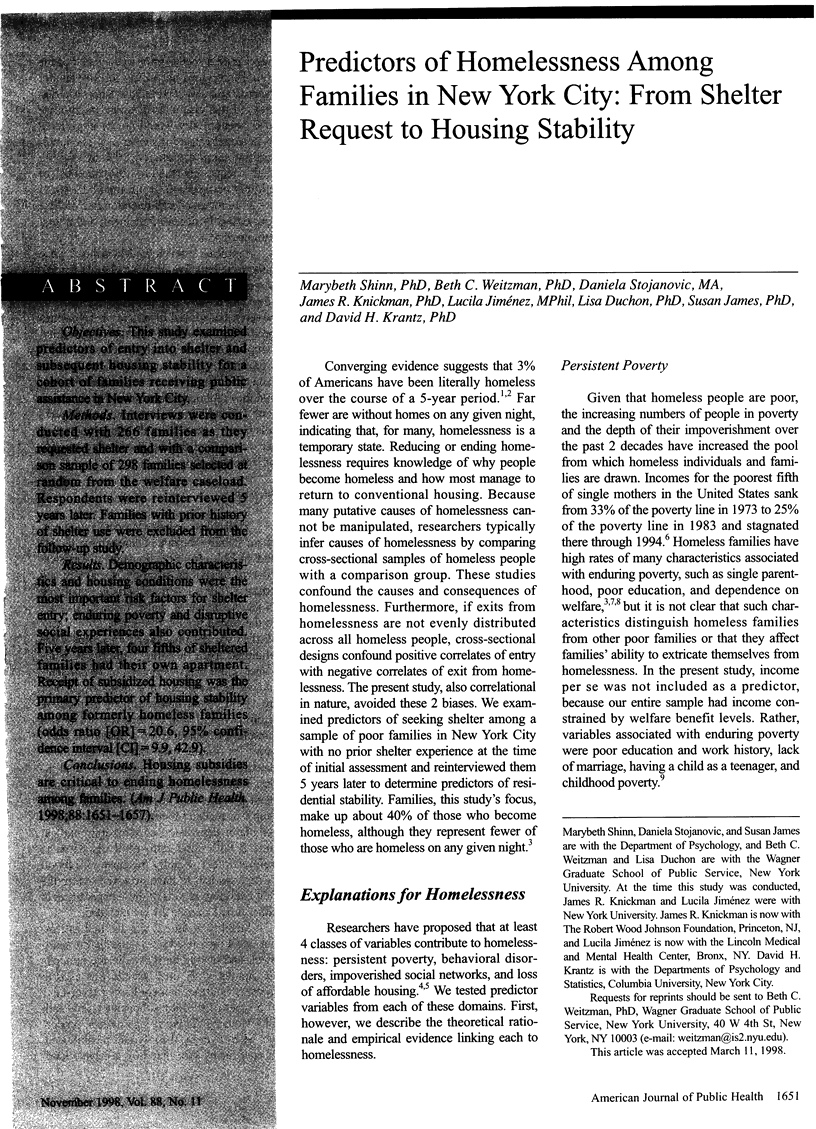
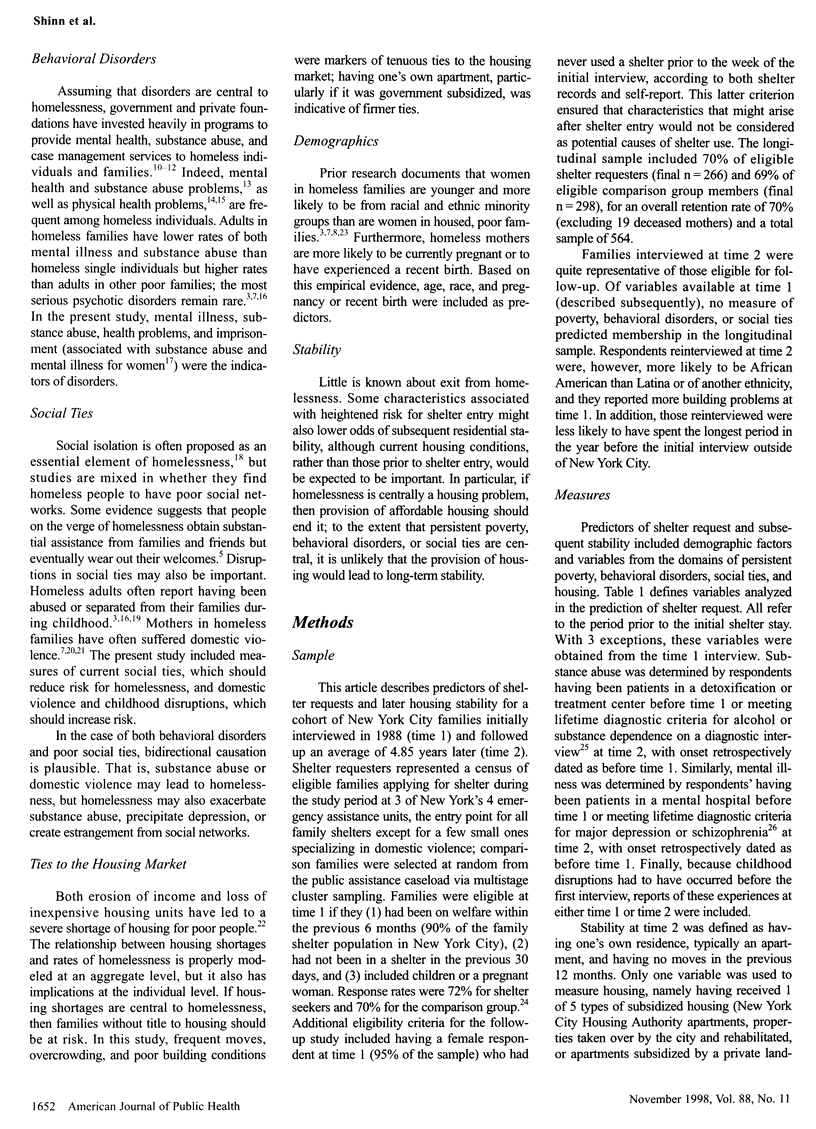
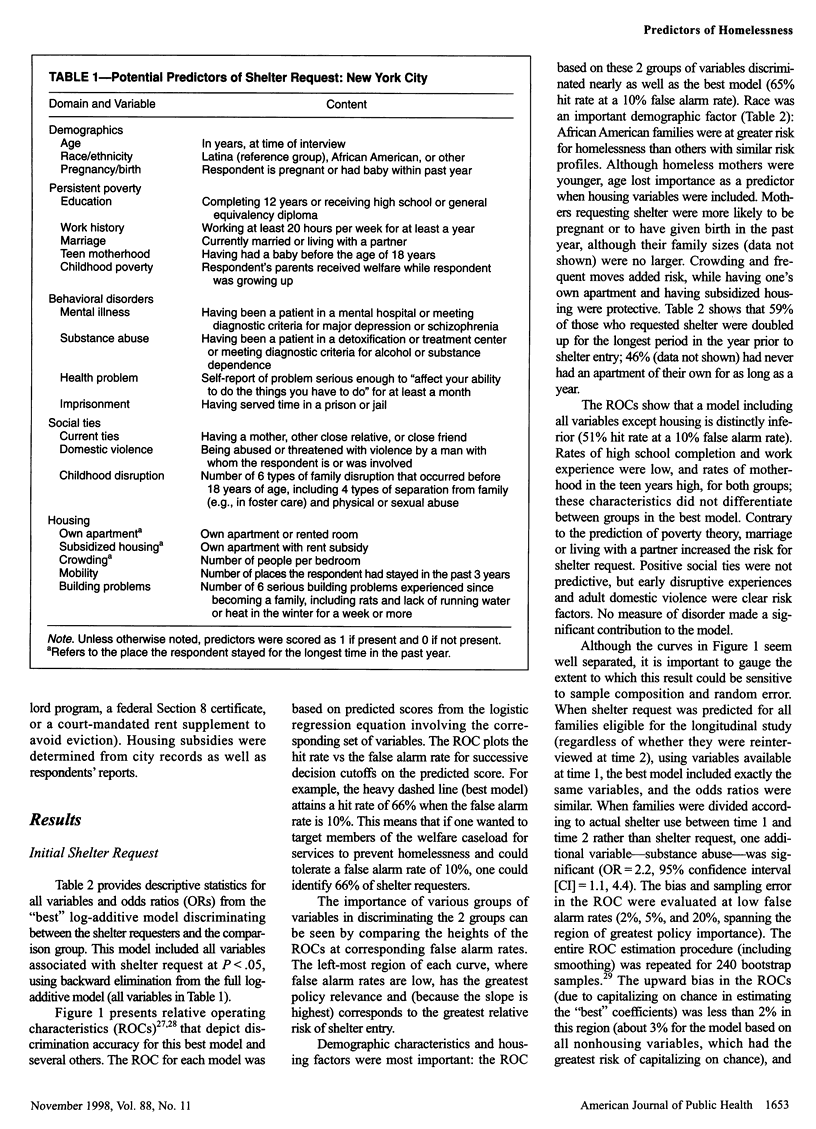
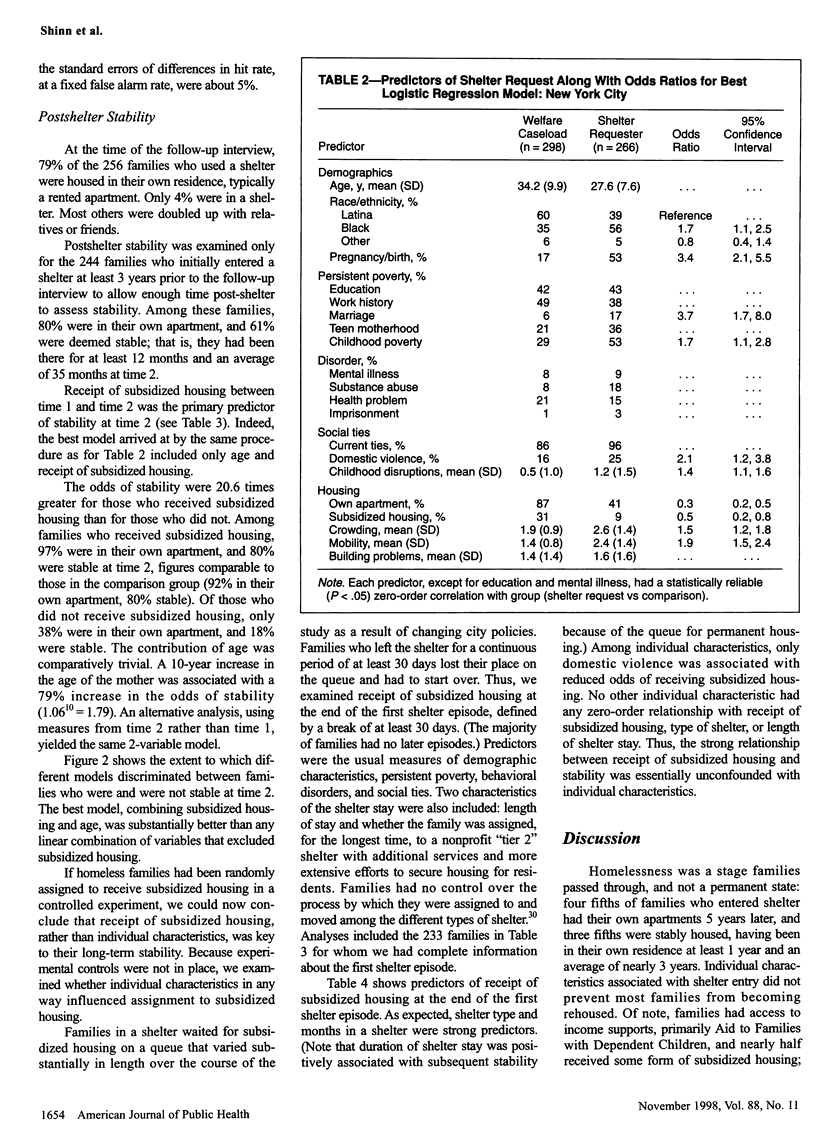
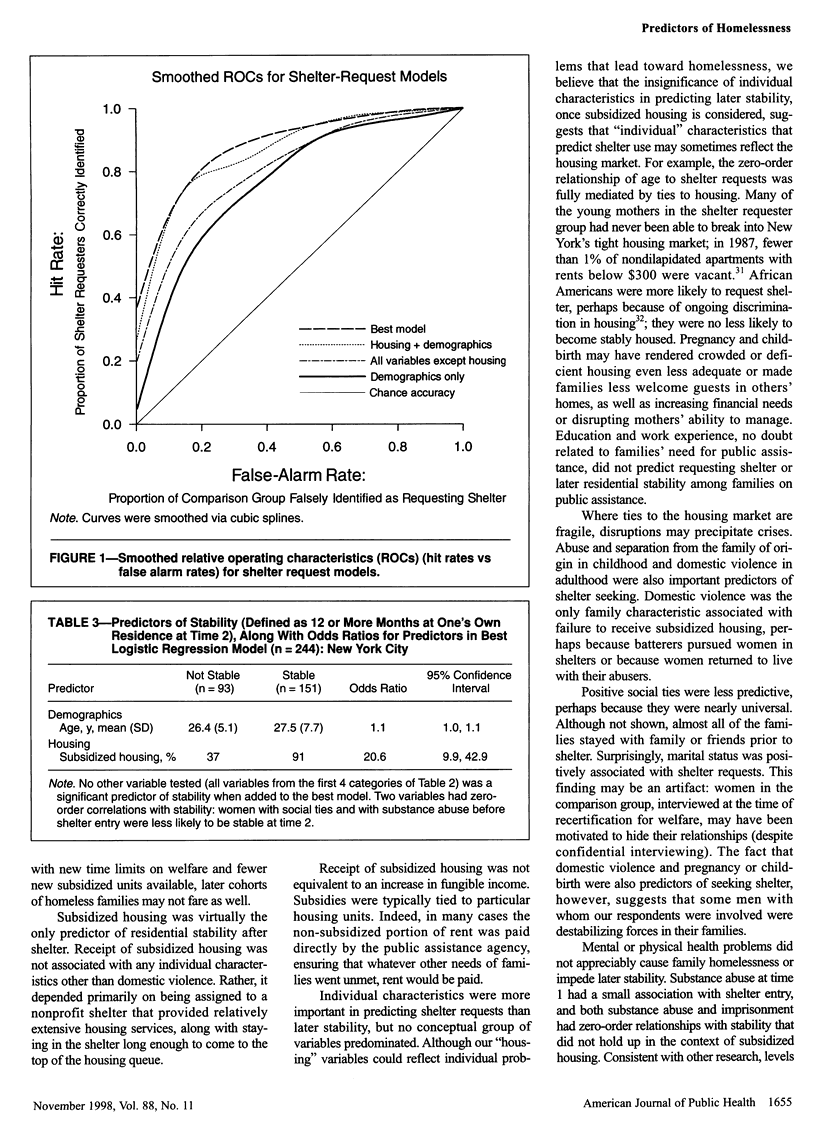
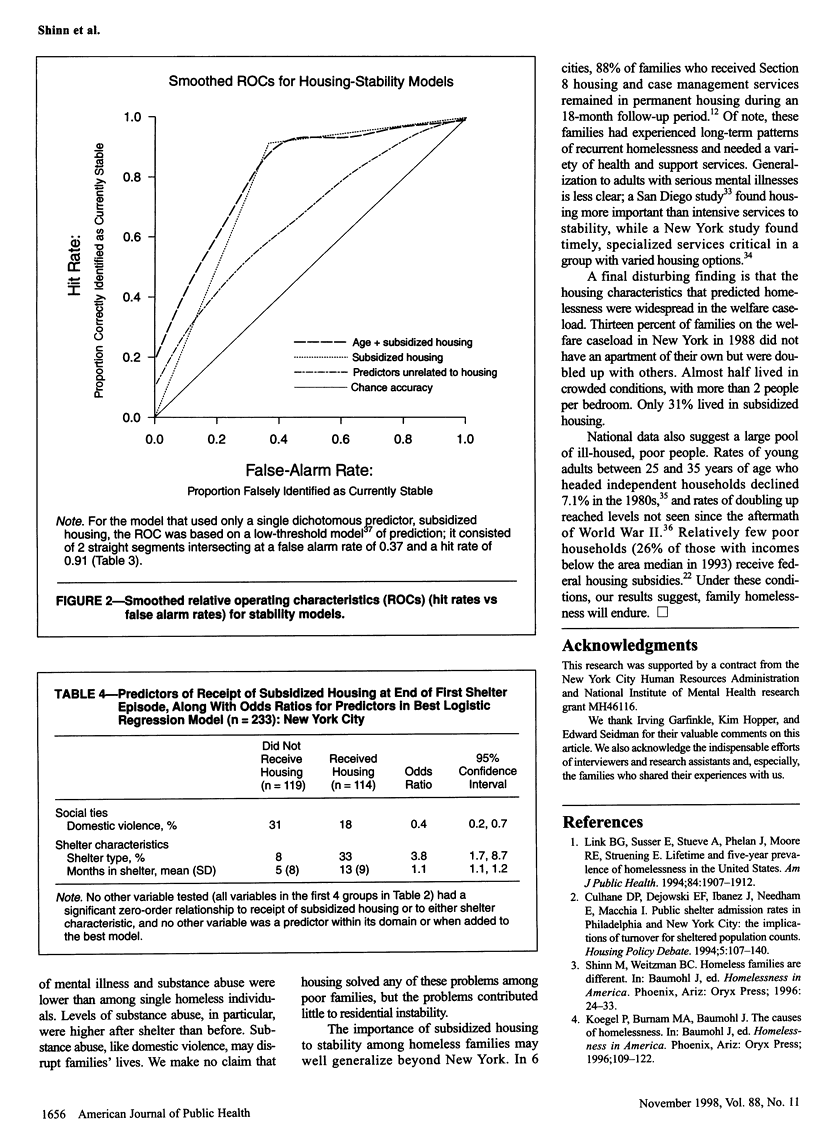
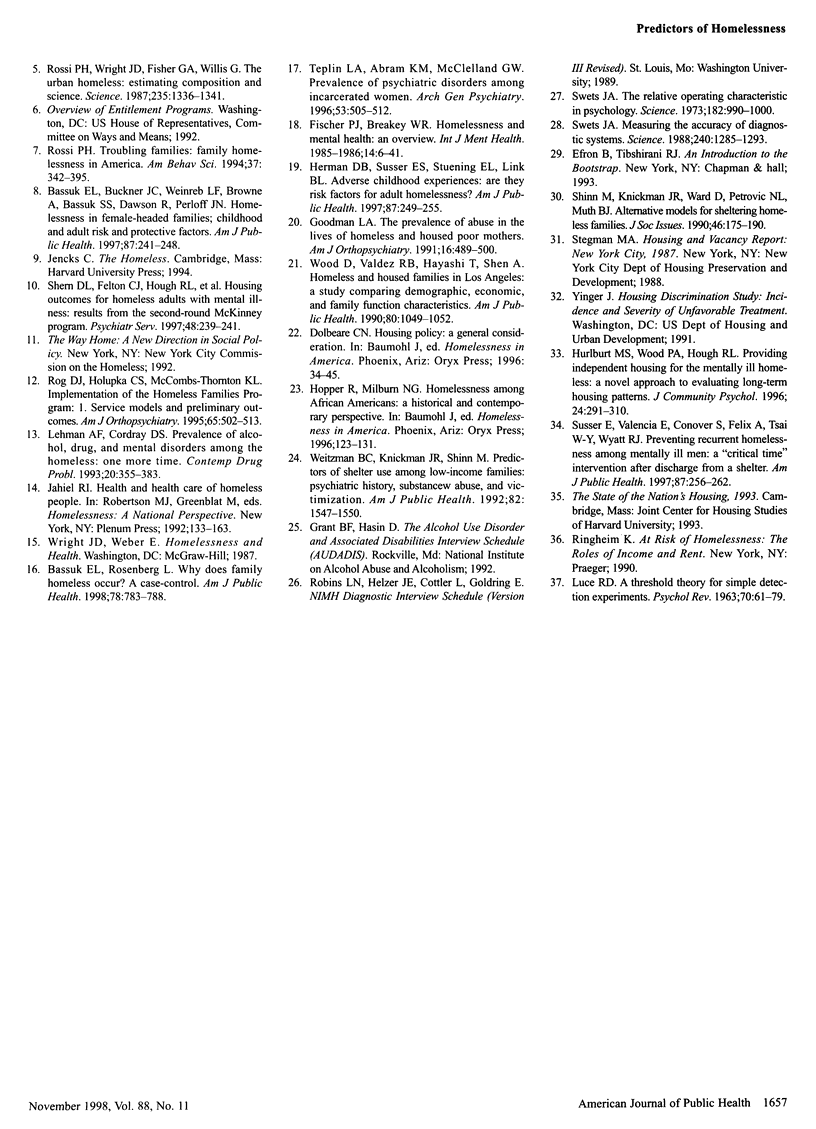
Selected References
These references are in PubMed. This may not be the complete list of references from this article.
- Bassuk E. L., Buckner J. C., Weinreb L. F., Browne A., Bassuk S. S., Dawson R., Perloff J. N. Homelessness in female-headed families: childhood and adult risk and protective factors. Am J Public Health. 1997 Feb;87(2):241–248. doi: 10.2105/ajph.87.2.241. [DOI] [PMC free article] [PubMed] [Google Scholar]
- Bassuk E. L., Rosenberg L. Why does family homelessness occur? A case-control study. Am J Public Health. 1988 Jul;78(7):783–788. doi: 10.2105/ajph.78.7.783. [DOI] [PMC free article] [PubMed] [Google Scholar]
- Goodman L. A. The prevalence of abuse among homeless and housed poor mothers: a comparison study. Am J Orthopsychiatry. 1991 Oct;61(4):489–500. doi: 10.1037/h0079287. [DOI] [PubMed] [Google Scholar]
- Herman D. B., Susser E. S., Struening E. L., Link B. L. Adverse childhood experiences: are they risk factors for adult homelessness? Am J Public Health. 1997 Feb;87(2):249–255. doi: 10.2105/ajph.87.2.249. [DOI] [PMC free article] [PubMed] [Google Scholar]
- LUCE R. D. A threshold theory for simple detection experiments. Psychol Rev. 1963 Jan;70:61–79. doi: 10.1037/h0039723. [DOI] [PubMed] [Google Scholar]
- Link B. G., Susser E., Stueve A., Phelan J., Moore R. E., Struening E. Lifetime and five-year prevalence of homelessness in the United States. Am J Public Health. 1994 Dec;84(12):1907–1912. doi: 10.2105/ajph.84.12.1907. [DOI] [PMC free article] [PubMed] [Google Scholar]
- Rog D. J., Holupka C. S., McCombs-Thornton K. L. Implementation of the homeless families program: 1. Service models and preliminary outcomes. Am J Orthopsychiatry. 1995 Oct;65(4):502–513. doi: 10.1037/h0085057. [DOI] [PubMed] [Google Scholar]
- Rossi P. H., Wright J. D., Fisher G. A., Willis G. The urban homeless: estimating composition and size. Science. 1987 Mar 13;235(4794):1336–1341. doi: 10.1126/science.2950592. [DOI] [PubMed] [Google Scholar]
- Shern D. L., Felton C. J., Hough R. L., Lehman A. F., Goldfinger S., Valencia E., Dennis D., Straw R., Wood P. A. Housing outcomes for homeless adults with mental illness: results from the second-round McKinney program. Psychiatr Serv. 1997 Feb;48(2):239–241. doi: 10.1176/ps.48.2.239. [DOI] [PubMed] [Google Scholar]
- Susser E., Valencia E., Conover S., Felix A., Tsai W. Y., Wyatt R. J. Preventing recurrent homelessness among mentally ill men: a "critical time" intervention after discharge from a shelter. Am J Public Health. 1997 Feb;87(2):256–262. doi: 10.2105/ajph.87.2.256. [DOI] [PMC free article] [PubMed] [Google Scholar]
- Swets J. A. Measuring the accuracy of diagnostic systems. Science. 1988 Jun 3;240(4857):1285–1293. doi: 10.1126/science.3287615. [DOI] [PubMed] [Google Scholar]
- Swets J. A. The Relative Operating Characteristic in Psychology: A technique for isolating effects of response bias finds wide use in the study of perception and cognition. Science. 1973 Dec 7;182(4116):990–1000. doi: 10.1126/science.182.4116.990. [DOI] [PubMed] [Google Scholar]
- Teplin L. A., Abram K. M., McClelland G. M. Prevalence of psychiatric disorders among incarcerated women. I. Pretrial jail detainees. Arch Gen Psychiatry. 1996 Jun;53(6):505–512. doi: 10.1001/archpsyc.1996.01830060047007. [DOI] [PubMed] [Google Scholar]
- Weitzman B. C., Knickman J. R., Shinn M. Predictors of shelter use among low-income families: psychiatric history, substance abuse, and victimization. Am J Public Health. 1992 Nov;82(11):1547–1550. doi: 10.2105/ajph.82.11.1547. [DOI] [PMC free article] [PubMed] [Google Scholar]
- Wood D., Valdez R. B., Hayashi T., Shen A. Homeless and housed families in Los Angeles: a study comparing demographic, economic, and family function characteristics. Am J Public Health. 1990 Sep;80(9):1049–1052. doi: 10.2105/ajph.80.9.1049. [DOI] [PMC free article] [PubMed] [Google Scholar]


